Seagate FireCuda 530 1TB review: New NVMe 4.0 SSD speed benchmark
In the high-end segment of the NVMe 4.0 SSD market, the Seagate FireCuda 530, although coming late, has confirmed its number one position in terms of speed.
Since the PCIe 4.0 standard was popularized through AMD 400 series chipsets or more recently Intel 600 series, memory companies have entered a new race after PCIe 3.0 speeds have hit the limit. The first generation NVMe 4.0 products actually only read and write at 4000 - 5000 MB/s. Technology cannot stand still, leading to big companies like Western Digital, Samsung also jumping into the race to increase NVMe 4.0 speed, reaching 6000 - 7000 MB/s.
Meanwhile, Seagate proved slow in catching up with the trend when launching NVMe 4.0 products long after competitors. FireCuda 530, the company's most advanced NVMe 4.0 line, was released long after competitors like the 980 Pro or SN850. However, the Seagate FireCuda 530 proves that it is a "reliable post-production" with the highest reading speed on the market.

Regarding the box, the packaging of FireCuda 530 is similar to products in the same segment on the market with the box designed according to the brand color tone and product image. The FireCuda dragon mascot takes up most of the content on the front. The box of FireCuda 530 also does not have a cutout to see the serial number affixed on the product inside.
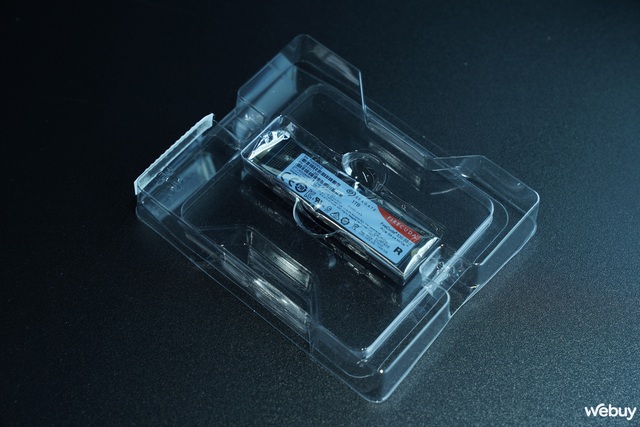
Like most other NVMe products, the FireCuda 530 is also housed in a plastic tray to limit collisions. One point I especially appreciate is that this SSD is also packaged in an anti-static and vacuum sealed bag to best preserve the product. This is a completely different approach to some of the high-end NVMe 4.0 products I've reviewed when there is only one plastic blister with a few covers that looks like a way to pack a popular memory card.

In addition to product manuals and data recovery software, Seagate is also very proud to include two sets of stickers with the company's logo and FireCuda brand.
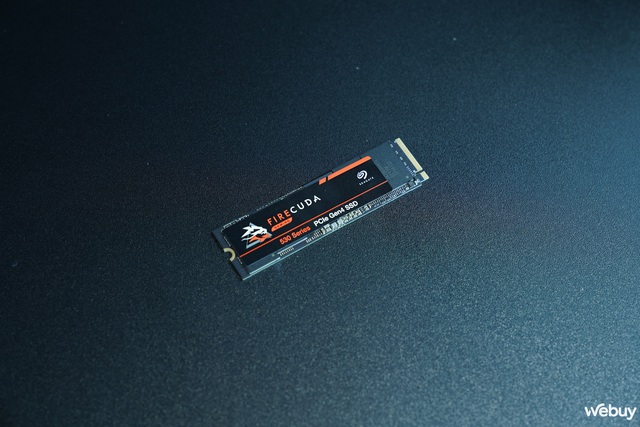
The main character, the FireCuda 530 1TB does not have too much difference in appearance compared to competitors. The top of this NVMe SSD is 3D TLC NAND flash memory chips, a carefully selected Phison E18 controller chip by Seagate, and a DRAM cache chip. All are located below the product logo stamp, which is also a heat-conducting stamp.
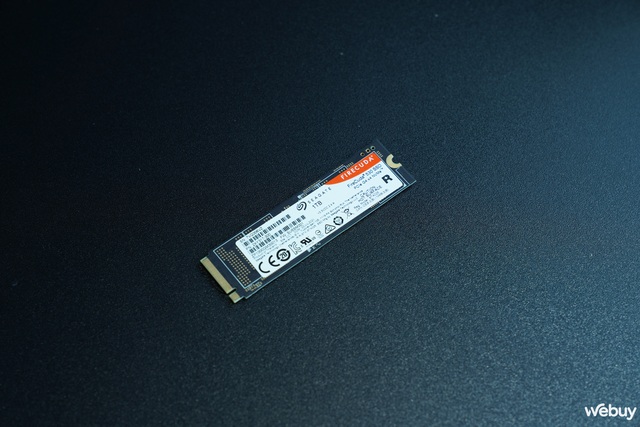
Because it is a single-sided NVMe, behind the FireCuda 530 there are no components, only stamps printed with parameters as well as product identifiers. A rather unfortunate point is that the version in my hand today does not have a heatsink.
Test configuration:
CPU: AMD Ryzen 9 5900X
Mainboard: Gigabyte AORUS B550i Pro AX
RAM: G.Skill Trident Royal 2x16GB 3600MHz CL14
VGA: Gigabyte Radeon RX6800 XT Gaming OC
PSU: Corsair SF750
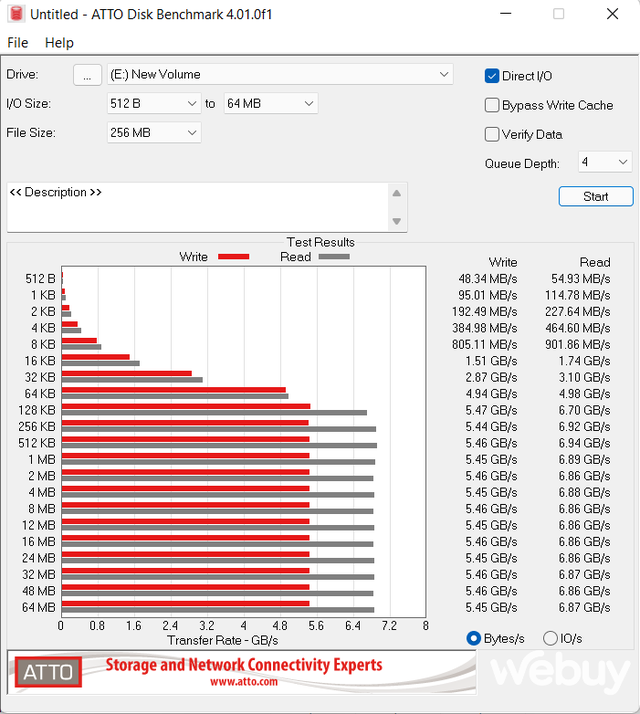
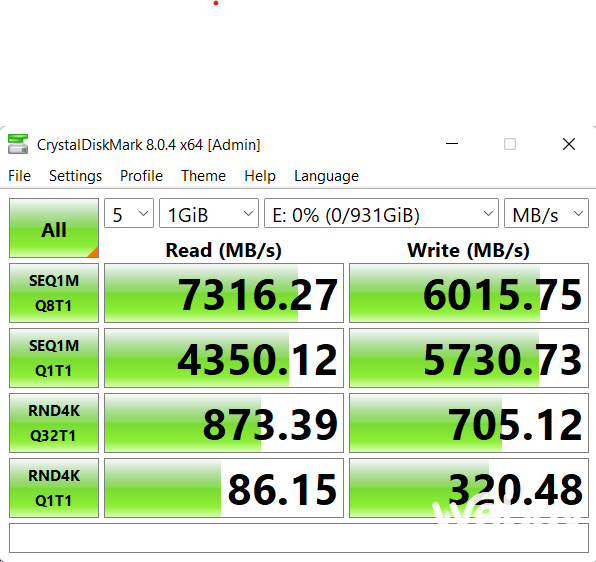
Born late, but FireCuda 530 is not inferior but even outperforms its competitors. In most common tests such as Atto, CrystalDiskMark, the sequential read speed of this SSD can reach 7300 MB/s. Meanwhile, the sequential write speed also reaches about 6000 MB/s. In the Atto test, it can be seen that with data blocks of 128KB or more, FireCuda 530 can completely achieve stable read / write speeds at a high level.
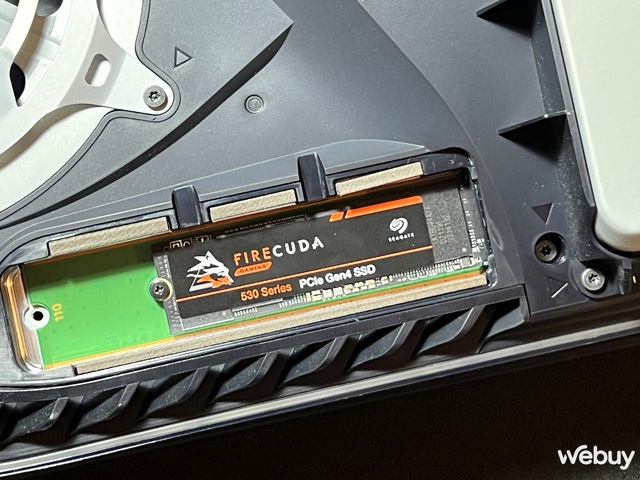

Not only that, FireCuda 530 is also certified as Compatible with PS5 and is the product used in advertising when PS5 launched the feature to expand internal memory using NVMe 4.0. No wonder this SSD can reach read speeds of 6500 MB/s, the highest in the segment. However, users will need to buy a version with an integrated heatsink or buy an external heatsink because the components on the NVMe 4.0 SSD run very hot, especially the controller chip. Letting the NVMe overheat will greatly affect the performance and lifespan of the product.

It can be seen that, during the benchmark run, thanks to the integrated heat sink on the mainboard, the highest operating temperature of the FireCuda 530 is only 59 degrees Celsius. However, if you remove the heatsink, it's almost certain. This SSD will hit 90-100 degrees Celsius, leading to overheating and must reduce the pulse, corresponding to the performance.
All in all, the Seagate FireCuda 530 has top speed and stability, if not the market leader at the moment. This speed is now also approaching the bandwidth limit of the NVMe 4.0 standard. Let's wait and see if internal memory manufacturers like Seagate will continue to exploit PCIe 4.0 or will soon switch to PCIe 5.0 to catch the trend. If you are a "prosumer" with a lot of needs to handle heavy files or high-resolution video or simply expand the storage capacity of PC or PS5 games, FireCuda 530 will definitely be one of the first choices. board.
- Choose the best configuration management tool for your business
- Essentials on Hitachi Content Platform (HCP) Data Protection and Security
- When used Software as a Security nightmare: The risks of collaboration in the cloud
- About this webinar | Features and instructions for using Webinar
- How to use Webinar in business | Webinar Story 2019
Operate and exploit advertising by iCOMM Vietnam Media and Technology Joint Stock Company.
116 Thai Ha, Trung Liet Ward, Dong Da District, Hanoi.
Email: info@more.edu.vn
Editor in chief: Tran Vo
Tel: (+84) 903076053/7 Fax: (+84) 903030935